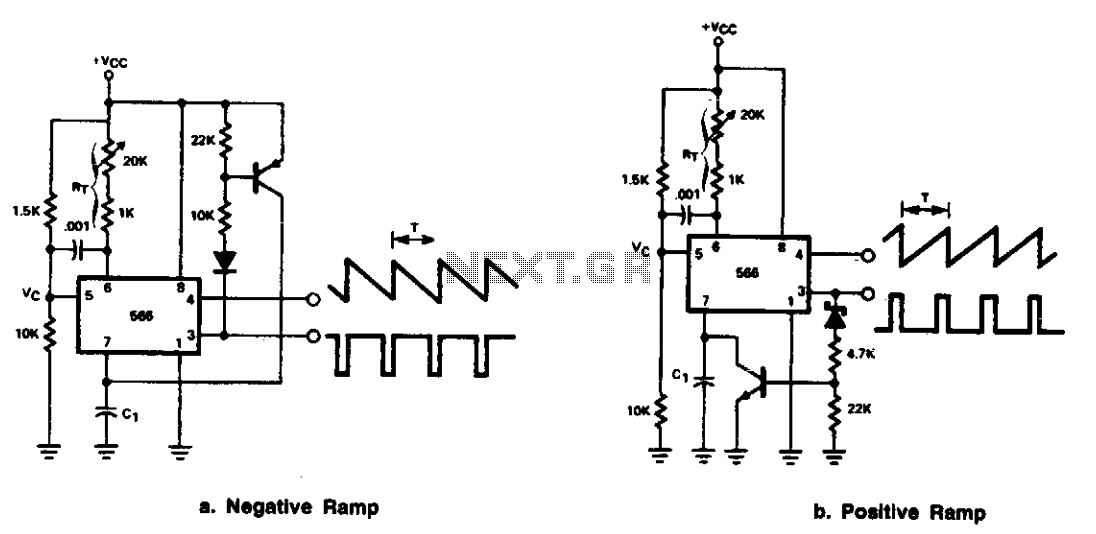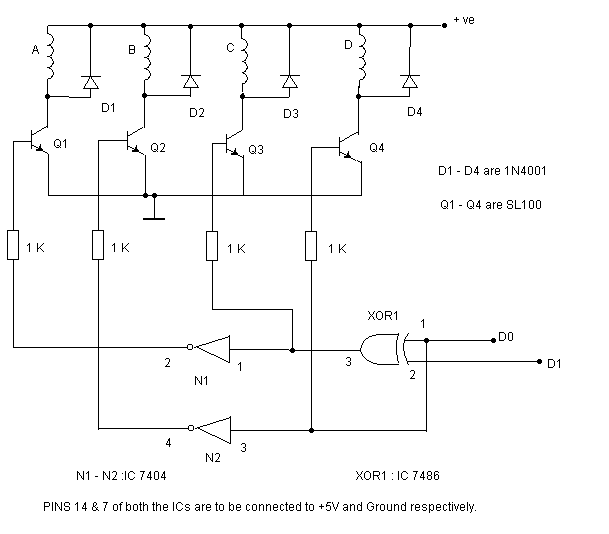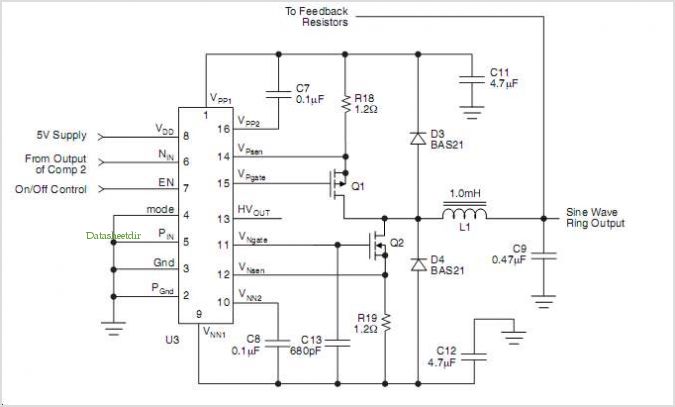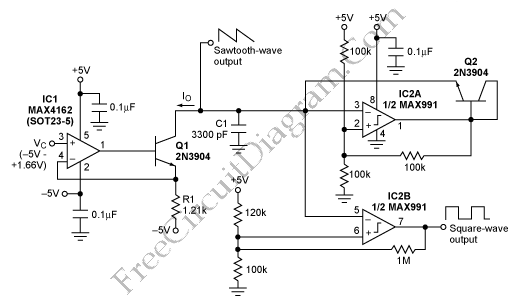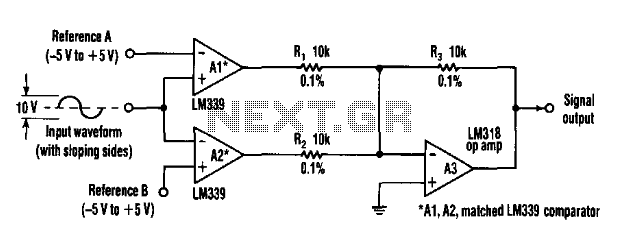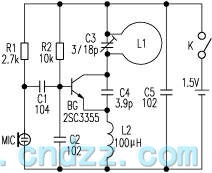
Simple Pulse Generator
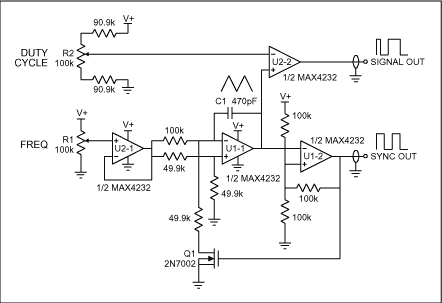
A pulse generator typically allows control over the pulse repetition rate, pulse width, pulse delay, and pulse amplitude. More advanced pulse generators may also enable adjustments to the rise time and fall time of the pulses. The delay of a pulse generator is measured concerning an internal or external trigger. The pulse generator's rate can be determined by a frequency or period adjustment (rep rate). Pulse generators may utilize digital techniques, analog techniques, or a combination of both to generate output pulses. For instance, the pulse repetition rate and duration may be controlled digitally, while the pulse amplitude and rise and fall times can be managed by analog circuitry in the output stage. With proper adjustments, a pulse generator can also create a square wave with a 50% duty cycle. Typically, pulse generators are single-channel devices that provide one frequency, delay, width, and output. To generate multiple pulses, simpler pulse generators must be connected in series or parallel. Some pulse generators, like the BNC Model DB-2 Random Pulse Generator, can simulate actual operating conditions without needing a live source and detector combination. Parameters such as frequency response, linearity, and discrimination levels can be measured without the inconvenience of dim oscilloscope displays or lengthy accumulation times. The proper functioning of baseline restorer circuits can be quickly verified. Scalers and ratemeters can be checked for satisfactory pulse recognition under random pulse conditions, with each pulse generator potentially offering different capabilities and features. The minimal amplitude shift with frequency from the pulser makes the standard frequency test using a live source and a low-rate precision pulse generator unnecessary. While most test applications will connect the pulser to the test input of a charge-sensitive preamplifier, it is also possible to simulate the preamp itself with the pulse generator. The pulser can be connected directly to the main amplifier, and the preamp decay time constant can be matched by properly selecting the pulser's fall time. Setting up a system with an inaccessible preamp can then be accomplished easily. For accurate simulation of detector pulse shapes, the rise time control should be adjusted to match twice the detector's decay time constant. For example, when testing a pulse shape analyzer with a CsI-NaI phoswich, the pulse generator's rise time should be set to 0.5 µsec for the NaI signal and 2 µsec for the CsI signal. Intermediate signals can be generated by mixing the outputs from two synchronized generators, both set to 2 µsec rise time. By varying the amplitude ratio of the two generators, intermediate rise time values can be produced. Solid-state and plastic detectors have decay constants that are significantly shorter than the adjustment range of this generator. However, the shaping time constants used in nearly all systems exceed the 100 nsec minimum rise time. The ballistic deficit formula predicts the amplitude reduction for a shaping system with identical time constants. The external reference allows for remote programming of the pulser's amplitude, while the external trigger facilitates control over the output pulse rate. This feature is particularly useful when controlling the average random rate without an external random clock. By setting the pulser to random mode, a periodic waveform at the external trigger input can control the average random rate. A new generation of pulse generators can produce multiple channels with independent widths, delays, outputs, and polarities. Often referred to as digital delay/pulse generators, these latest designs may even offer differing repetition rates, delays, and widths for each channel, allowing them to produce timing signals and operate in output modes independently of the other channels.
Pulse generators are versatile instruments used in various applications, including testing electronic components, simulating signal conditions, and generating precise timing signals. A typical pulse generator circuit consists of several key components: a clock oscillator, pulse shaping circuitry, and output stages. The clock oscillator generates a stable frequency signal, which can be adjusted to set the pulse repetition rate.
The pulse shaping circuitry is crucial for controlling the characteristics of the output pulses, such as rise time, fall time, and pulse width. This circuitry may include analog components like resistors, capacitors, and operational amplifiers, as well as digital components such as microcontrollers or field-programmable gate arrays (FPGAs) for precise digital control.
The output stage of the pulse generator is responsible for delivering the generated pulses to the load. This stage may include transistors or operational amplifiers configured to provide the necessary drive capability to meet the load requirements. Additionally, features like variable amplitude control and external triggering can be implemented to enhance the functionality of the pulse generator.
In more advanced pulse generators, multiple output channels can be integrated, allowing for simultaneous generation of different pulse characteristics. Each channel can be independently configured for parameters such as pulse width, delay, and amplitude, making these devices suitable for complex testing scenarios where multiple signal conditions need to be simulated.
Moreover, pulse generators with digital delay capabilities can provide high precision and flexibility, enabling users to create complex timing sequences and patterns. The integration of digital techniques with analog components allows for enhanced performance, making modern pulse generators indispensable tools in electronic testing and development environments.A Pulse generator usually allows control of the pulse repetition rate, pulse width, pulse delay and pulse amplitude. More sophisticated pulse generators may allow control over the rise time and fall time of the pulses.
A pulse generator`s delay is measured with respect to an internal or external trigger. The pulse generator`s rate may be determine d by a frequency or period adjust (rep rate). Pulse generators may use digital techniques, analog techniques, or a combination of both techniques to form the output pulses. For example, the pulse repetition rate and duration may be digitally controlled but the pulse amplitude and rise and fall times may be determined by analog circuitry in the output stage of the pulse generator.
With correct adjustment, a pulse generator can also produce a 50% duty cycle square wave. Pulse generators are generally single-channel providing one frequency, delay, width and output. To produce multiple pulses, these simple pulse generators would have to be ganged in series or in parallel. Some Pulse Generators like the BNC Model DB-2 Random pulse generator simulate actual operating conditions without requiring a live source and detector combination.
Such parameters as frequency response, linearity, and discrimination levels may easily be measured without the inconvenience of dim oscilloscope display or long accumulation times by a pulse generator. Proper operation of baseline restorer circuits may be quickly verified. Scalers and ratemeters may be checked for satisfactory pulse recognition under random pulse (each pulse generator may be equipped with different capabilities and features).
The negligible amplitude shift with frequency of the pulser (pulse generator) makes the standard frequency test using a live source and a low rate precision pulse generator unnecessary. Although most test applications will find the pulser connected to the test input of a charge sensitive preamplifier, it is possible to simulate the preamp itself with the pulse generator.
The pulser is connected directly to the main amplifier and the preamp decay time constant is matched by proper selection of the pulser fall time. Set up of a system containing an inaccessible preamp can then be accomplished with ease. For accurate simulation of detector pulse shapes, the rise time control should be adjusted to match 2.
2 times the detector decay time constant. For example, if a pulse shape analyzer working with CsI-NaI phoswich is to be tested, the pulse generator rise time should be set to 0. 5 µsec rise time for the NaI signal, and 2 µsec for the CsI signal. Intermediate signals are best obtained by mixing the outputs from two synchronized generators, 2 µsec rise time.
By varying the amplitude ratio of the two generators, intermediate values of rise time are generated. Solid state and plastic detectors have decay constants far shorter than the adjustment range of this generator.
However, the shaping time constants used in virtually all systems are greater than the 100 nsec minimum rise time. The ballistic deficit formula predicts the reduction in amplitude, B. D. , for a shaping system containing identical time constants for all shaping. The external reference allows remote programming of the amplitude of the pulser, and the external trigger permits control of the output pulse rate.
The latter provision is especially convenient if the average random rate needs to be controlled and an external random clock is unavailable. By placing the pulser in the random mode, a periodic waveform at the external trigger input will control the average random rate.
A new family of pulse generators can produce multiple-channels of independent widths and delays and independent outputs and polarities. Often called digital delay/pulse generators, the newest designs even offer differing repetition rates with each channel, differing delays and differing widths.
They can be producing timing signals and operate in output modes independent of the other channels. 🔗 External reference
Pulse generators are versatile instruments used in various applications, including testing electronic components, simulating signal conditions, and generating precise timing signals. A typical pulse generator circuit consists of several key components: a clock oscillator, pulse shaping circuitry, and output stages. The clock oscillator generates a stable frequency signal, which can be adjusted to set the pulse repetition rate.
The pulse shaping circuitry is crucial for controlling the characteristics of the output pulses, such as rise time, fall time, and pulse width. This circuitry may include analog components like resistors, capacitors, and operational amplifiers, as well as digital components such as microcontrollers or field-programmable gate arrays (FPGAs) for precise digital control.
The output stage of the pulse generator is responsible for delivering the generated pulses to the load. This stage may include transistors or operational amplifiers configured to provide the necessary drive capability to meet the load requirements. Additionally, features like variable amplitude control and external triggering can be implemented to enhance the functionality of the pulse generator.
In more advanced pulse generators, multiple output channels can be integrated, allowing for simultaneous generation of different pulse characteristics. Each channel can be independently configured for parameters such as pulse width, delay, and amplitude, making these devices suitable for complex testing scenarios where multiple signal conditions need to be simulated.
Moreover, pulse generators with digital delay capabilities can provide high precision and flexibility, enabling users to create complex timing sequences and patterns. The integration of digital techniques with analog components allows for enhanced performance, making modern pulse generators indispensable tools in electronic testing and development environments.A Pulse generator usually allows control of the pulse repetition rate, pulse width, pulse delay and pulse amplitude. More sophisticated pulse generators may allow control over the rise time and fall time of the pulses.
A pulse generator`s delay is measured with respect to an internal or external trigger. The pulse generator`s rate may be determine d by a frequency or period adjust (rep rate). Pulse generators may use digital techniques, analog techniques, or a combination of both techniques to form the output pulses. For example, the pulse repetition rate and duration may be digitally controlled but the pulse amplitude and rise and fall times may be determined by analog circuitry in the output stage of the pulse generator.
With correct adjustment, a pulse generator can also produce a 50% duty cycle square wave. Pulse generators are generally single-channel providing one frequency, delay, width and output. To produce multiple pulses, these simple pulse generators would have to be ganged in series or in parallel. Some Pulse Generators like the BNC Model DB-2 Random pulse generator simulate actual operating conditions without requiring a live source and detector combination.
Such parameters as frequency response, linearity, and discrimination levels may easily be measured without the inconvenience of dim oscilloscope display or long accumulation times by a pulse generator. Proper operation of baseline restorer circuits may be quickly verified. Scalers and ratemeters may be checked for satisfactory pulse recognition under random pulse (each pulse generator may be equipped with different capabilities and features).
The negligible amplitude shift with frequency of the pulser (pulse generator) makes the standard frequency test using a live source and a low rate precision pulse generator unnecessary. Although most test applications will find the pulser connected to the test input of a charge sensitive preamplifier, it is possible to simulate the preamp itself with the pulse generator.
The pulser is connected directly to the main amplifier and the preamp decay time constant is matched by proper selection of the pulser fall time. Set up of a system containing an inaccessible preamp can then be accomplished with ease. For accurate simulation of detector pulse shapes, the rise time control should be adjusted to match 2.
2 times the detector decay time constant. For example, if a pulse shape analyzer working with CsI-NaI phoswich is to be tested, the pulse generator rise time should be set to 0. 5 µsec rise time for the NaI signal, and 2 µsec for the CsI signal. Intermediate signals are best obtained by mixing the outputs from two synchronized generators, 2 µsec rise time.
By varying the amplitude ratio of the two generators, intermediate values of rise time are generated. Solid state and plastic detectors have decay constants far shorter than the adjustment range of this generator.
However, the shaping time constants used in virtually all systems are greater than the 100 nsec minimum rise time. The ballistic deficit formula predicts the reduction in amplitude, B. D. , for a shaping system containing identical time constants for all shaping. The external reference allows remote programming of the amplitude of the pulser, and the external trigger permits control of the output pulse rate.
The latter provision is especially convenient if the average random rate needs to be controlled and an external random clock is unavailable. By placing the pulser in the random mode, a periodic waveform at the external trigger input will control the average random rate.
A new family of pulse generators can produce multiple-channels of independent widths and delays and independent outputs and polarities. Often called digital delay/pulse generators, the newest designs even offer differing repetition rates with each channel, differing delays and differing widths.
They can be producing timing signals and operate in output modes independent of the other channels. 🔗 External reference
